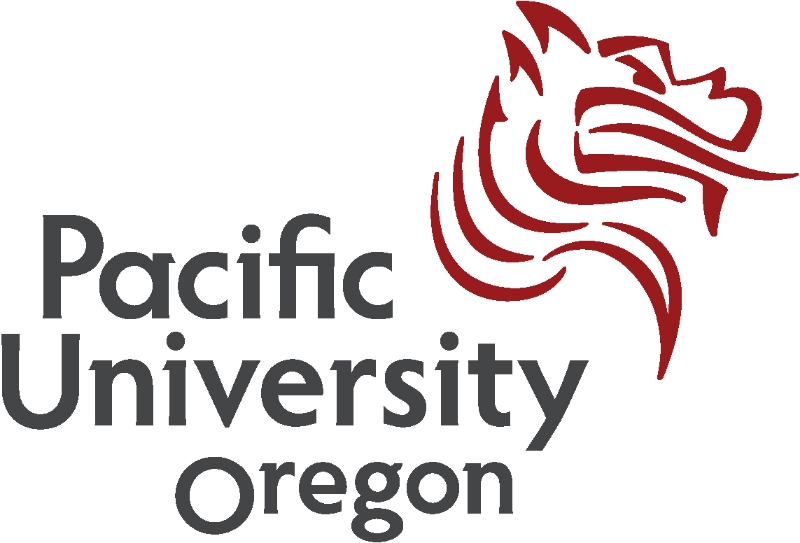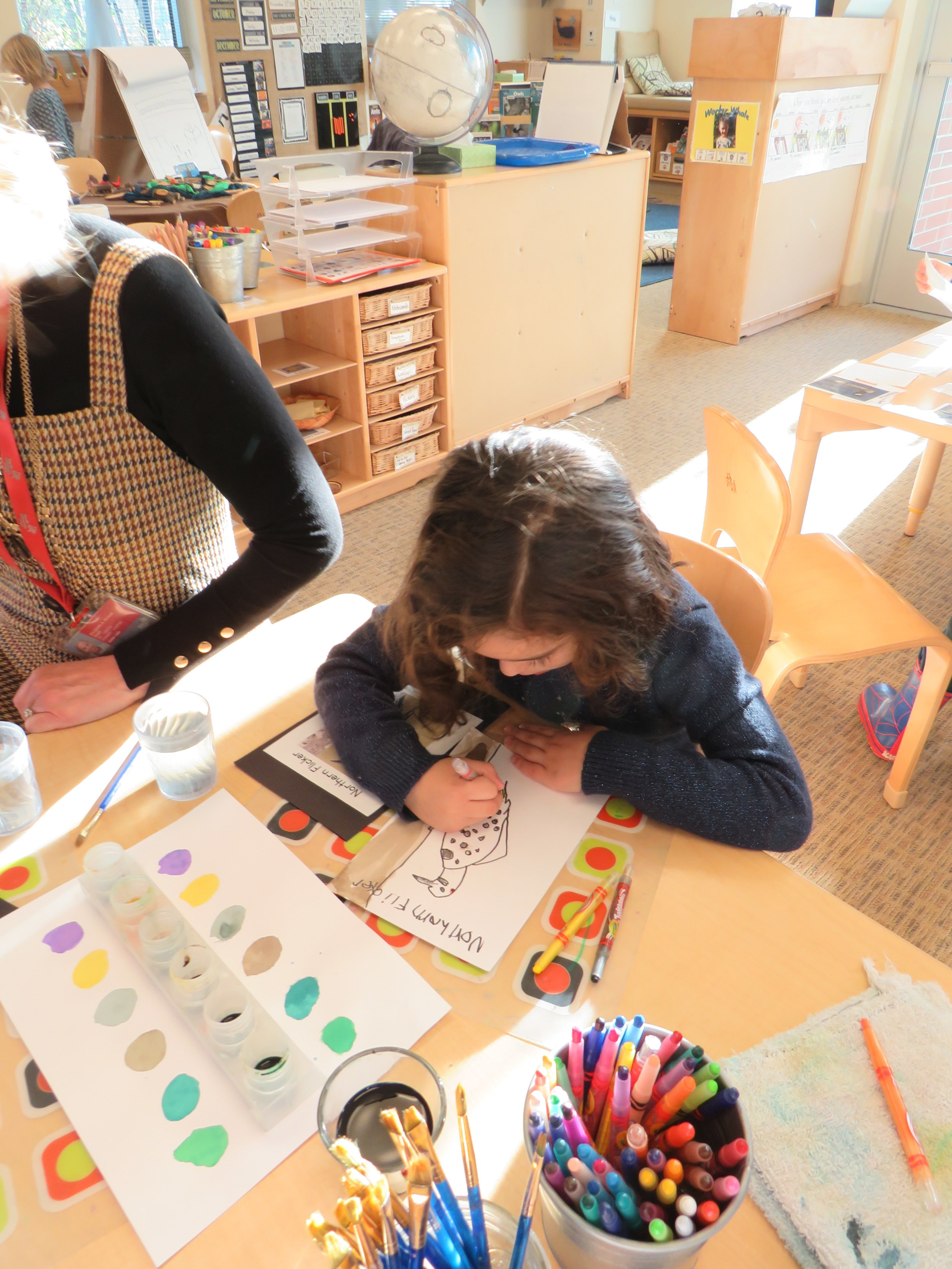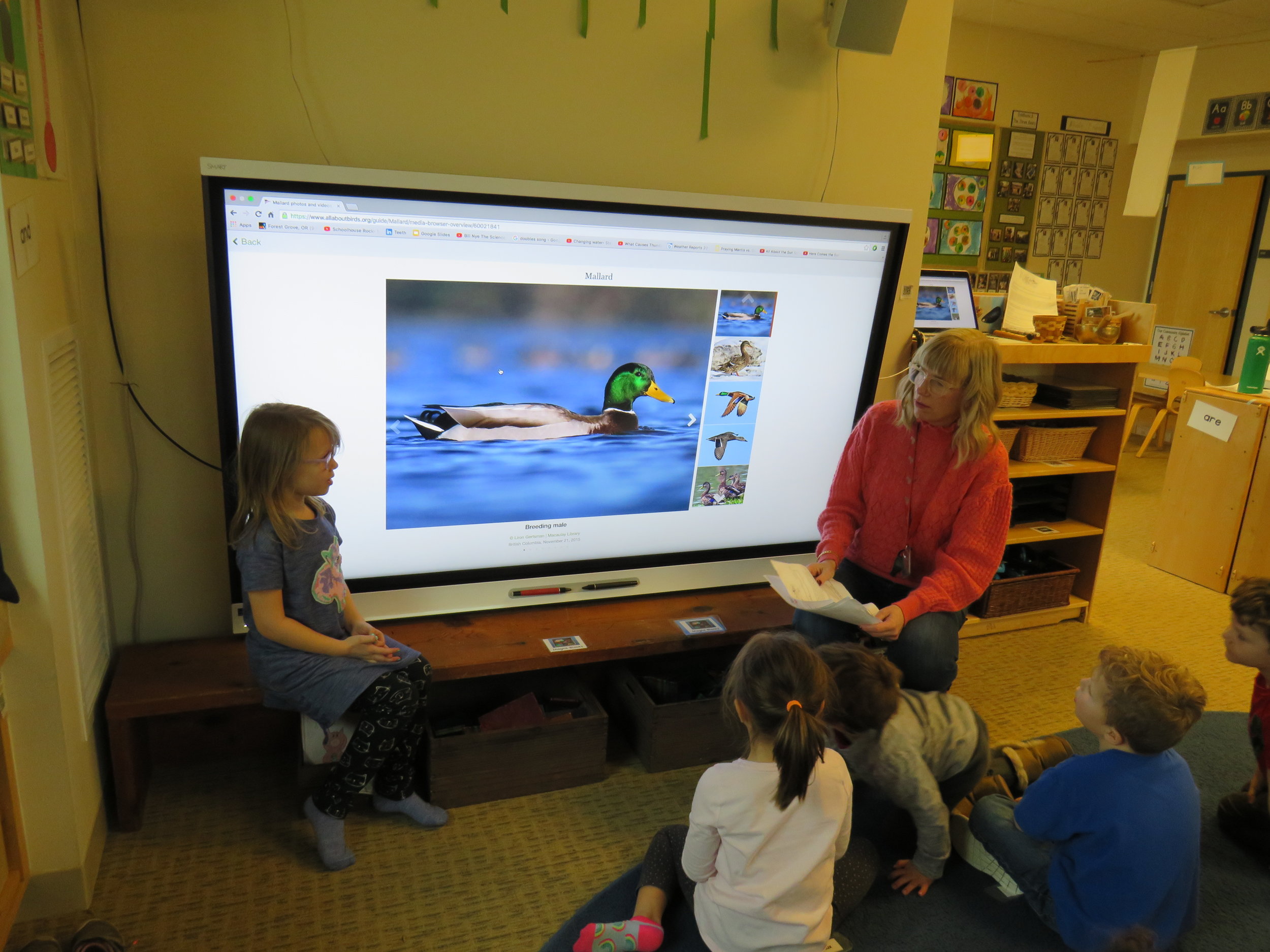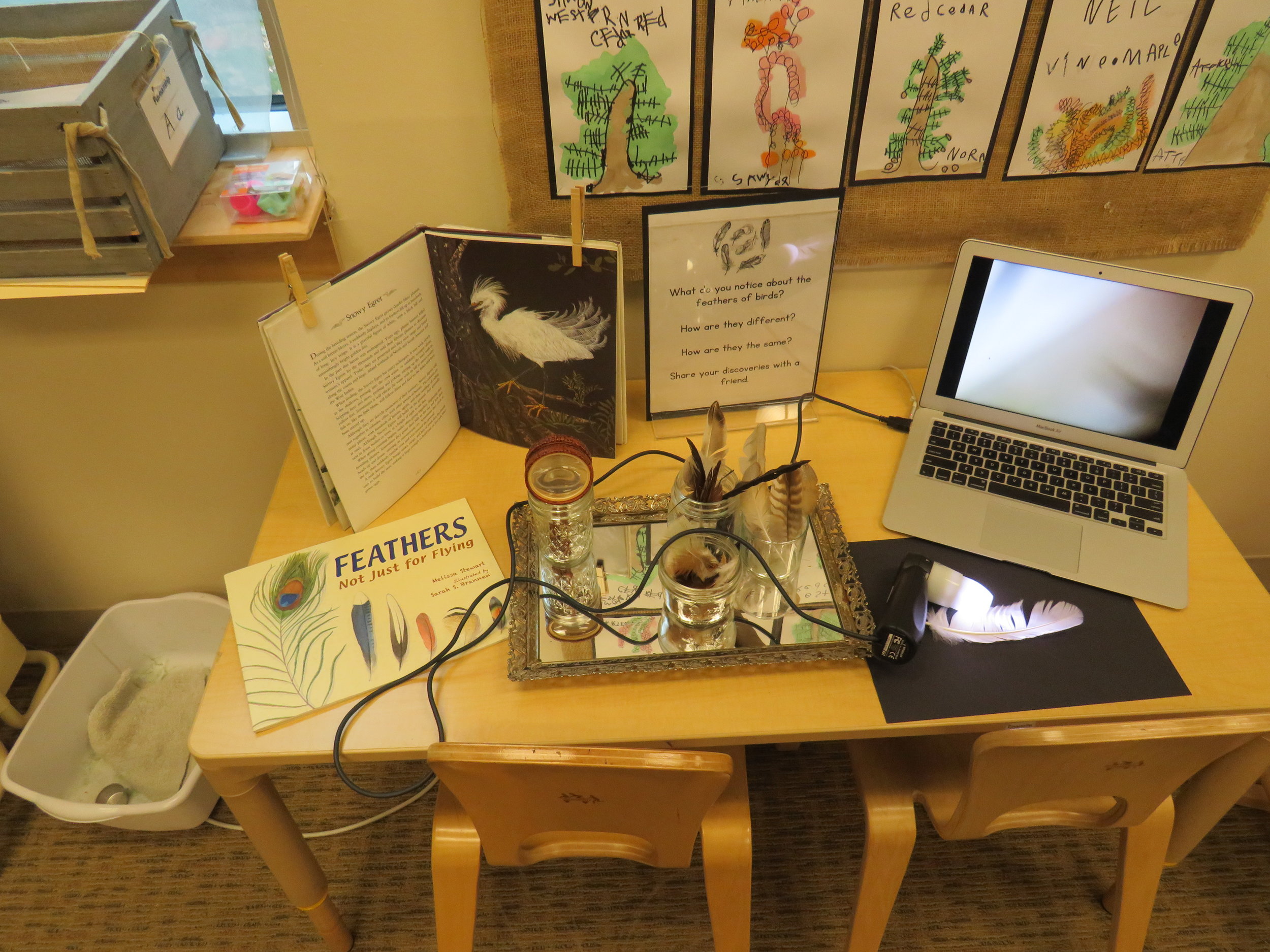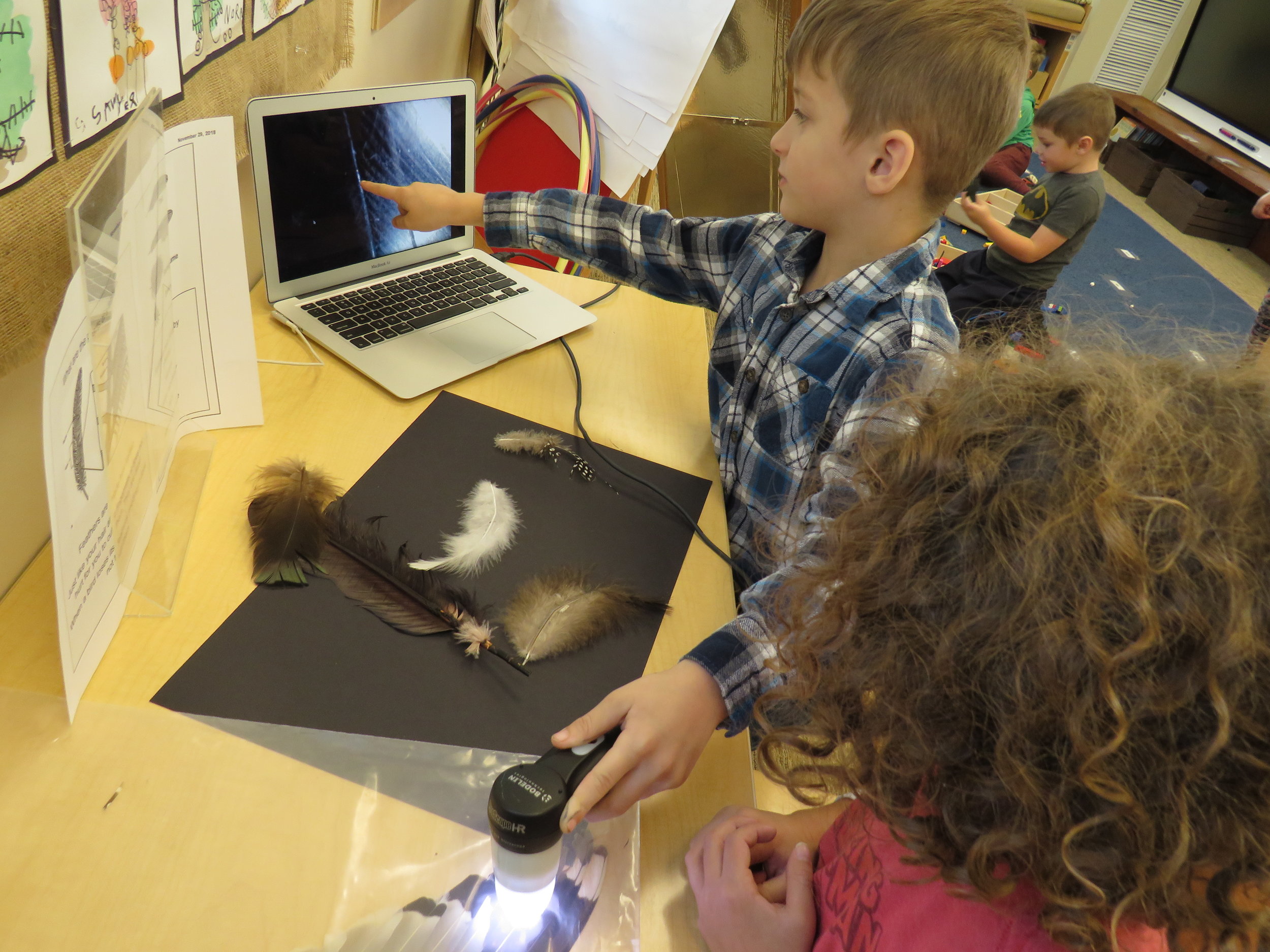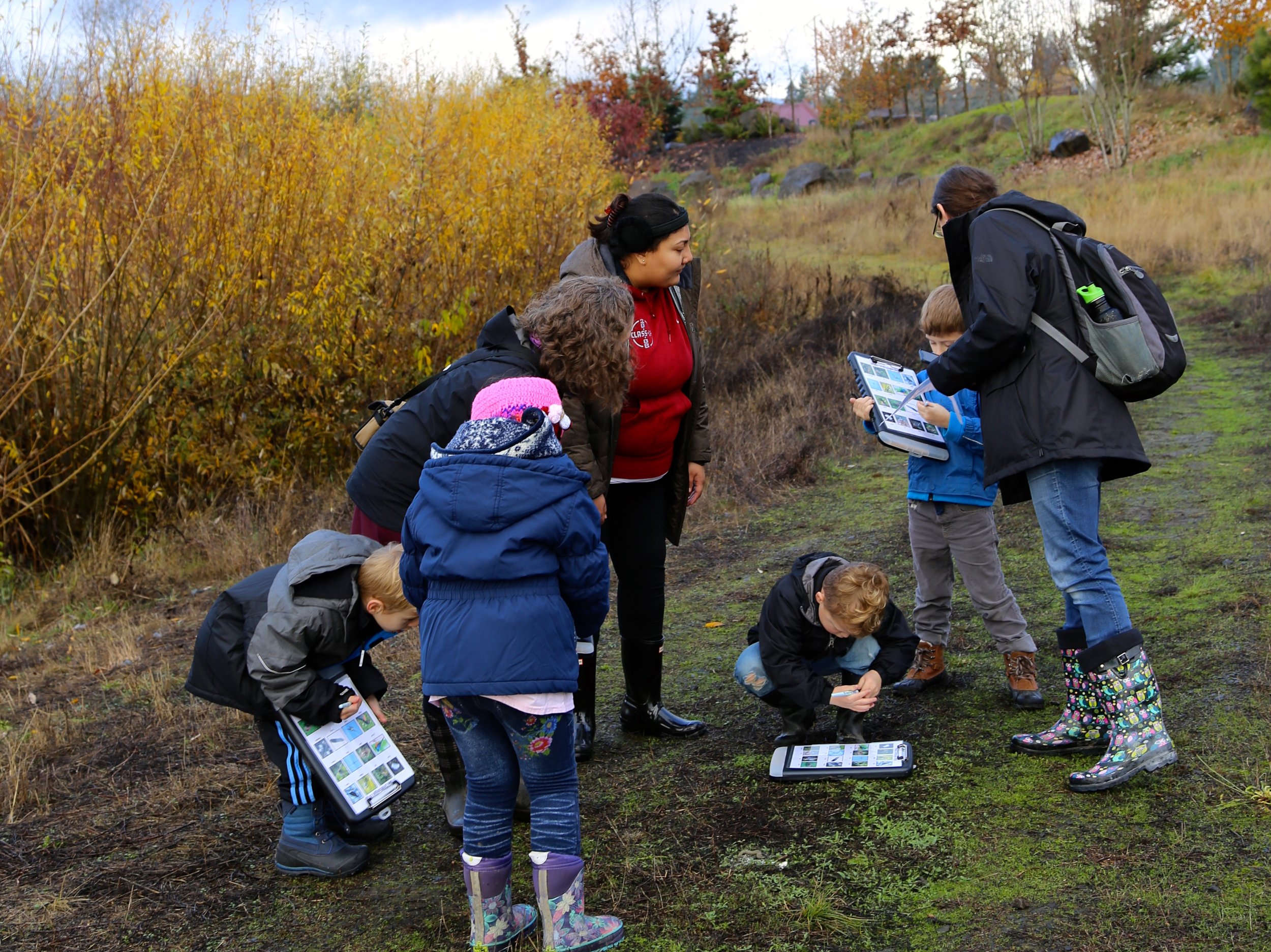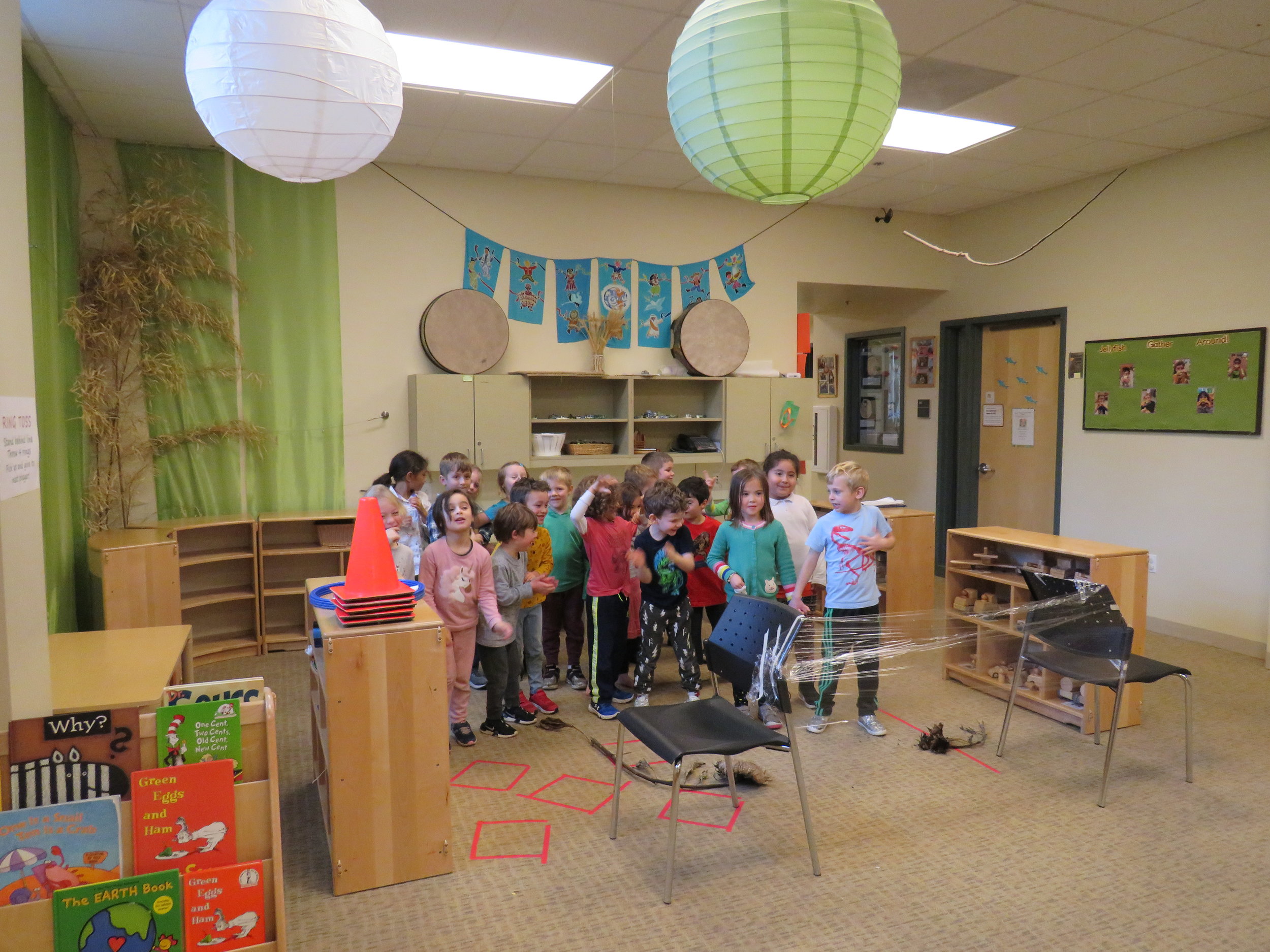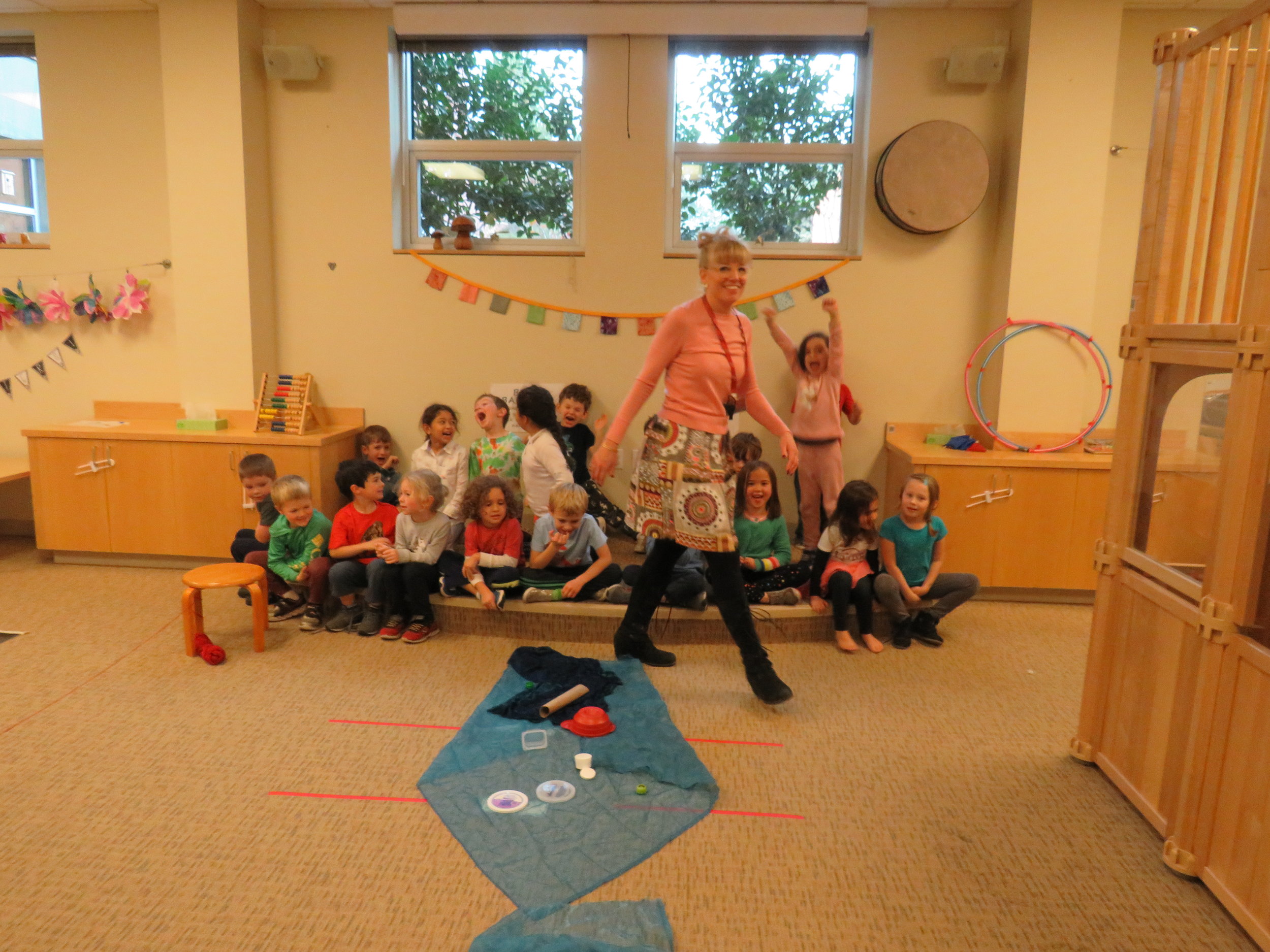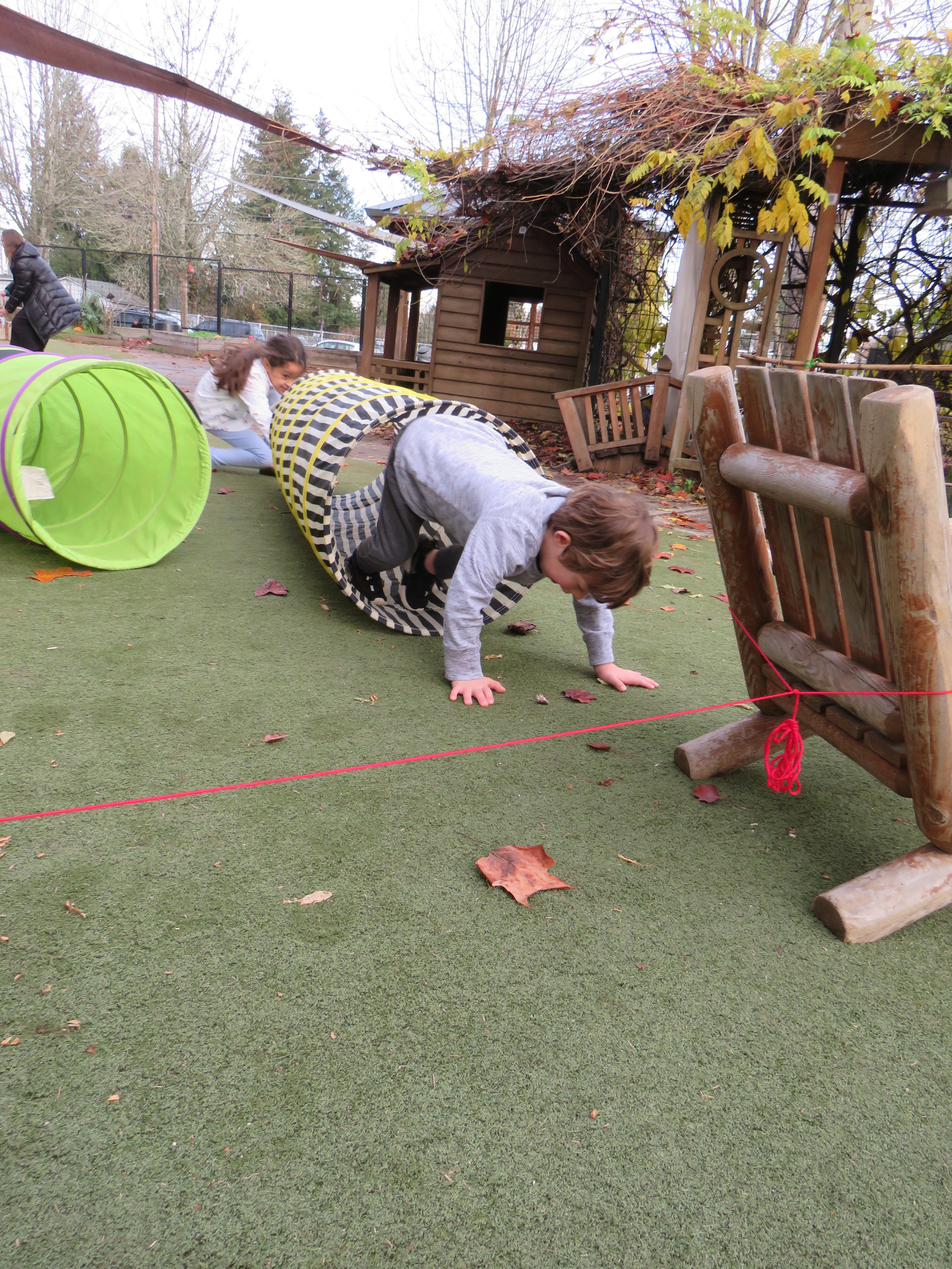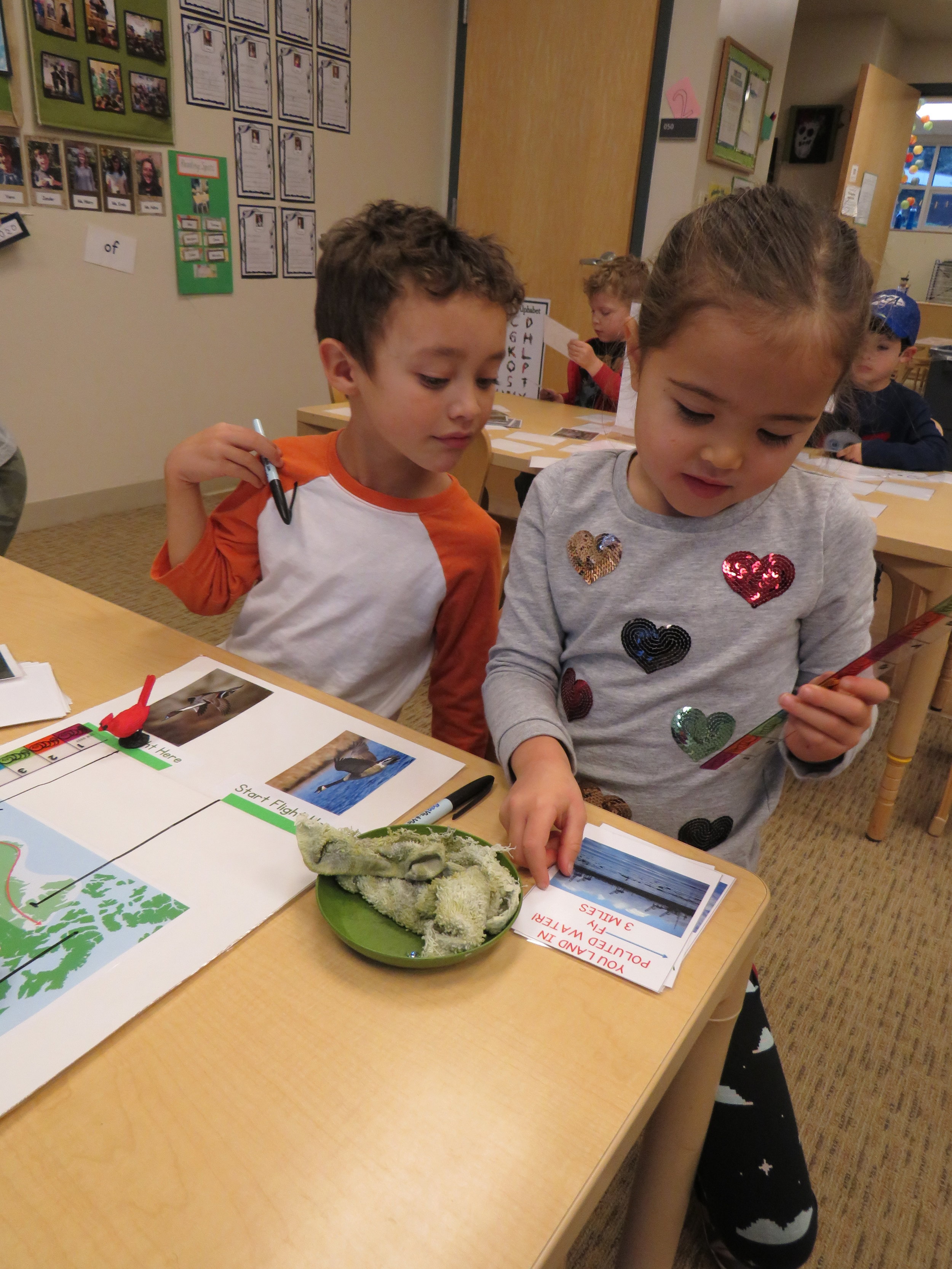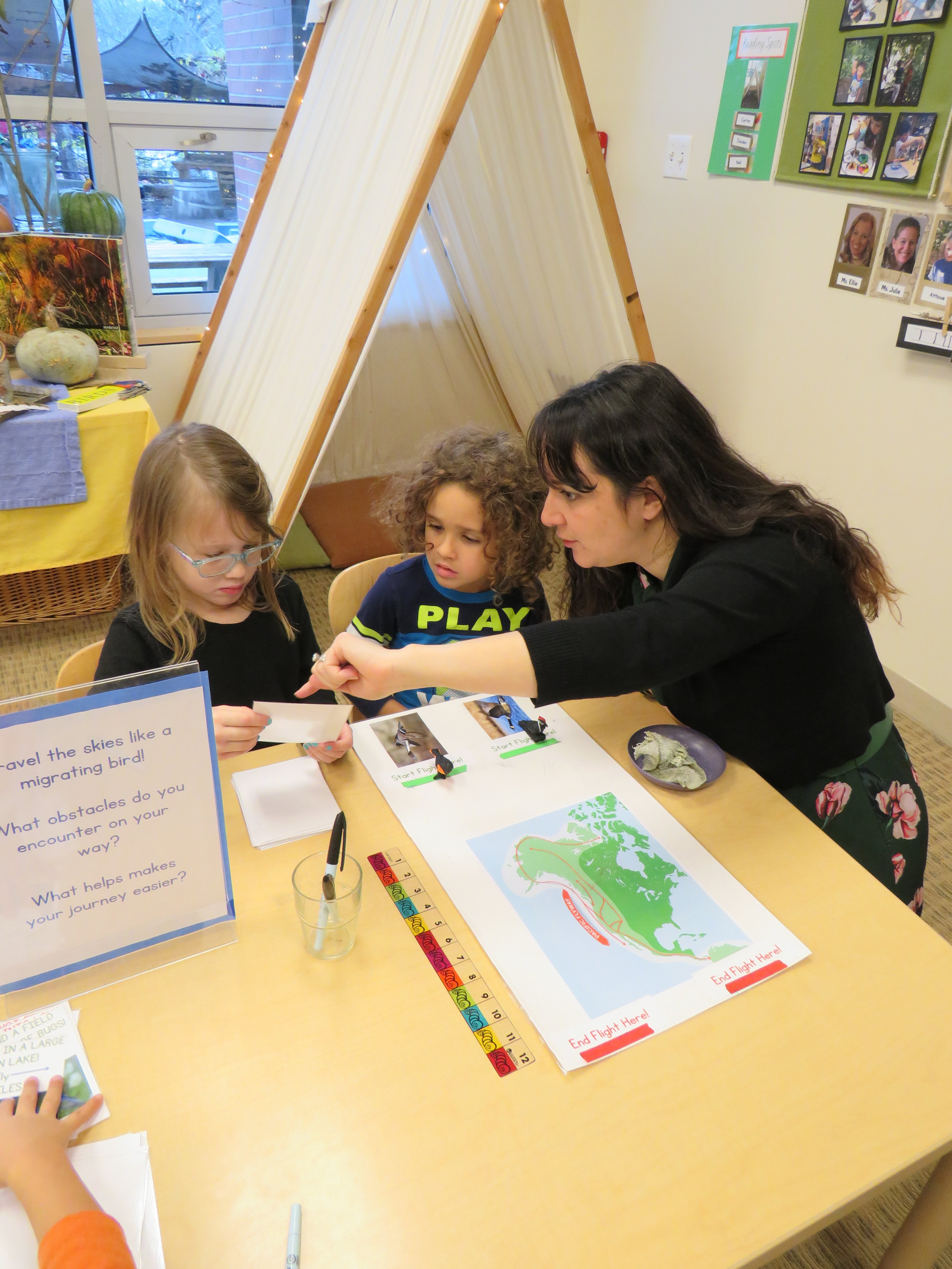Whales Are Birders!
/ Abby ThompsonWhales have been busy the last three weeks delving deep into the fascinating world of birds. Students started their investigation by choosing a bird common to the Pacific Flyway. Students spent time examining “their” bird, looking closely at its habitat, diet, calls, beak & feet shape, and coloring. We drew and painted our birds, creating beautiful scientific illustrations that aptly represented the bird’s particular shape, color, size and habitat. As each Whale student presented their research, their friends shared exclamations of wonder and delight. The Whales were hooked! The following weeks were filled with the talk of budding ornithologists.
Our study continued as we spent time learning more about the one thing that sets birds apart from other animals - feathers! We looked at feathers under our Proscope, noticing the structural differences between downy, contour and flight feathers. We conducted experiments on water repellency and the wind resistance of certain types of feathers. We also played a matching game that required us to notice the types of beaks and feet distinct to various bird species.
As we discovered more about the special qualities of a bird’s beak and feet, we began to notice that birds had bodies that were really made to help them survive in their particular habitat, and birds can do some pretty amazing things. We decided to try our hand at becoming a variety of different bird species. With the help of plenty of Whale parents, we held an exciting day of Bird Olympics. We tried to stare for hours without blinking like owls, stand on one foot (with our eyes closed!) like Great Blue Herons, flap our “wings” as quickly as an Anna’s Hummingbird, “fly” as fast as an American Kestrel, and measure our own wingspan against that of a Bald Eagle. We decided being a bird was lots of fun, but it wasn’t easy!
The more we learned about birds, the more we were itching to see them up close. Thanks to some pretty amazing Whale parents who are biology professors and ornithologists, Whales were given the opportunity to visit our local wetlands and get a glimpse of many of the birds we were studying. The excitement was palpable as we boarded our (very first!) school bus, and headed to Fernhill Wetlands. The weather could not have been more perfect, and the number of birds we saw was simply thrilling. What a magical day of birding adventure!
As we watched huge flocks of birds flying overhead at Fernhill, we began to wonder about where all those birds were going. We explored the concept of migration and discovered that many birds had to travel south in search of warmer weather and a more abundant food supply. We talked about how mysterious the act of migration is, and how difficult and dangerous it can be for birds and other animals. Later in the week, we tried our hand at becoming migrating birds and discovered that it was fun and extremely tiring! After running our Migration Obstacle Course, we spent some time exchanging ideas of ways we could make migration easier for birds. Some of the ideas we came up with were “Don’t cut down trees”, “Leave food in feeders for them”, “Don’t build buildings over wetlands”, “Don’t put trash in our water!”. Whales made bird feeders in atelier, placed them in the piazza and then noticed a Hairy Woodpecker visiting the feeders later in the week. What fun!
At the end of the week, Whales compiled a list of lingering questions for our ornithologist and biologists, Mr. Gregor and Ms. Lauren. Whales sat rapt listening to answers to their questions about migration, feather color, egg color and bird anatomy. Whales have become bird experts!
